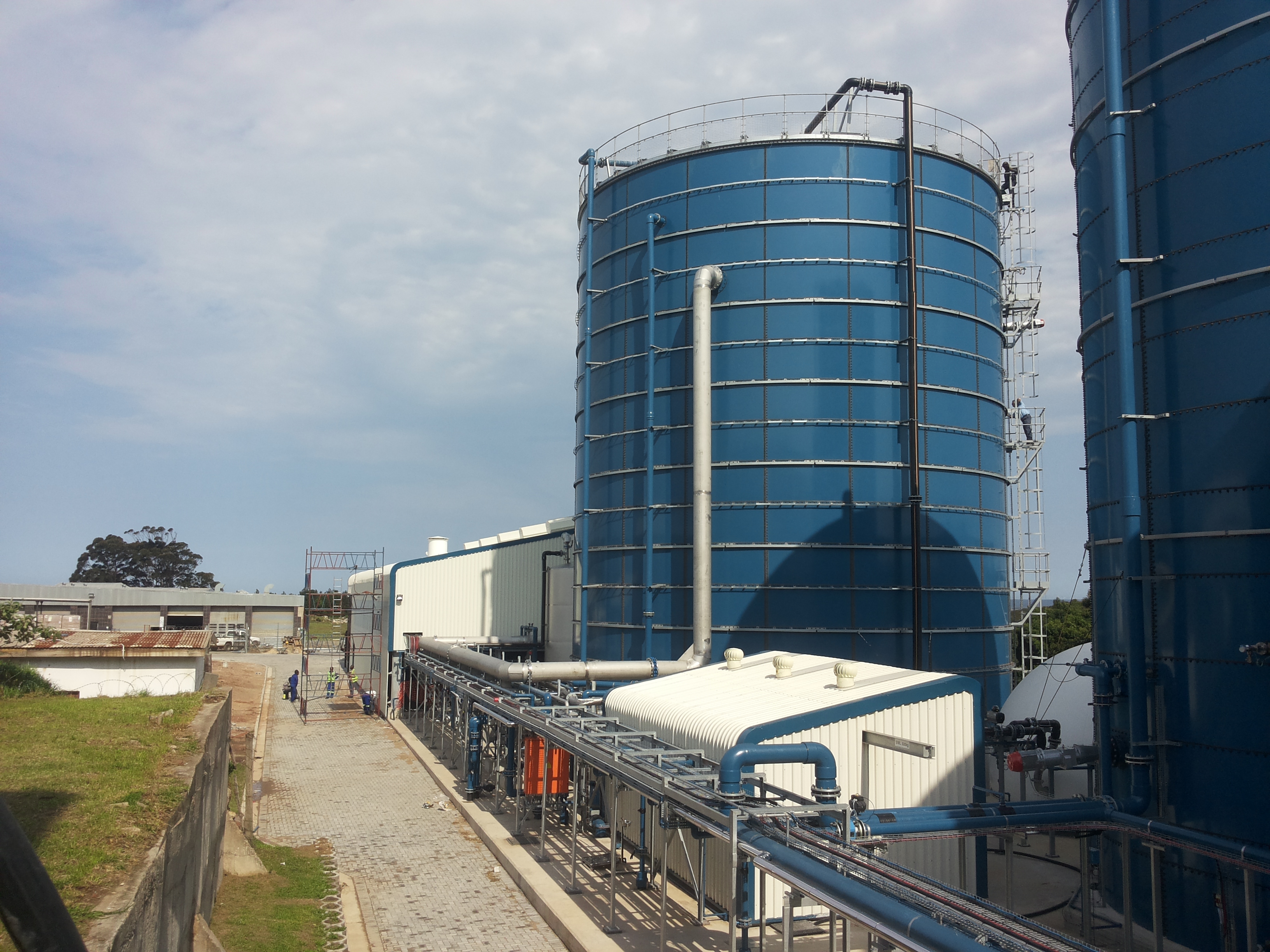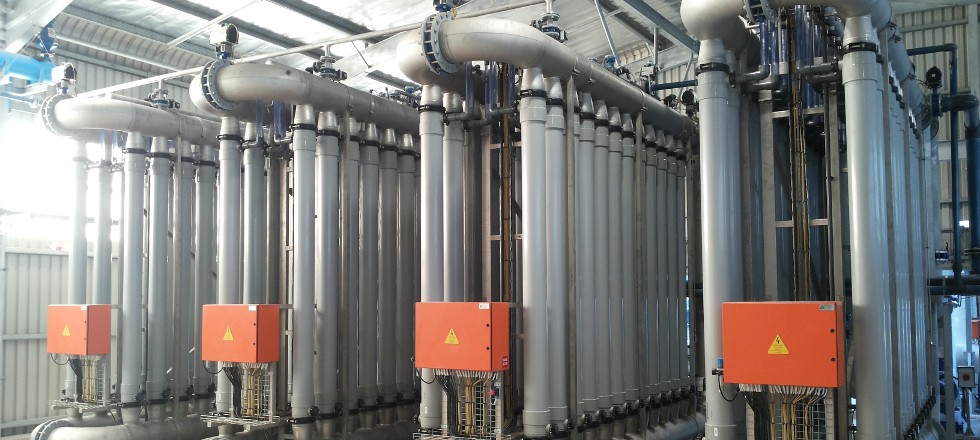- Home
- Case Studies
- Woodlands
Location
South Africa
Start-up
2017
Source
Dairy wastewater
Construction
2016
BACKGROUND
Sustainability is at the core of all operations in the Woodlands Dairy milk processing plant in Humansdorp, South Africa. Determined to minimize the use of resources and eliminate waste, Woodlands Dairy also aims for a smaller carbon footprint by lowering its energy consumption.
Because a growing dairy business will produce a growing wastewater stream, Woodlands Dairy decided on a Memthane® installation to treat it in the most efficient manner possible today, and produce energy at the same time.
ABOUT WOODLANDS
Woodlands Dairy employs over 1,400 people and prides itself on an innovative spirit, agility and speed in new product development, and excellent customer service. The product range includes various cheeses, butter, cream, custard, flavoured milks, and amasi, a fermented milk similar to cottage cheese that is very popular in Southern Africa. The company also produces extended shelf life (ESL) fresh milk and is one of the largest manufacturers of UHT milk in South Africa, marketed under the brand First Choice.
The milk processing factory is located along the South African Garden Route, right in the heart of the Eastern Cape dairy region. As a local fresh milk processor that produces and packages high-quality dairy products, Woodlands wants to take full responsibility for the environmental impact of its operations. The farming methods should not only have a minimal impact on the environment, but should also be animal-friendly and boost public support for dairy farming.
WATER MANAGEMENT
The Woodlands Dairy factory comprises a milk sterilisation and packaging plant, as well as a cheese factory. In 2012, the company adopted an environmental management system (EMS) to improve its energy efficiency and waste management, and to decrease both its emissions and use of natural resources. The EMS complies with the international ISO 14001 standard and aims to minimize operational impacts on the environment, ensure legal compliance, and continuously improve the company’s environmental performance.
Memthane® is an anaerobic membrane bioreactor (AnMBR) process which contains the micro biological anaerobic process (excludes oxygen), this technology turns medium to high-strength wastewater into energy and clean water that can be directly reused or discharged. The system was developed in a cooperation between Veolia subsidiary Biothane and Pentair. The Biothane reactor processes the wastewater and generates biogas. Pentair’s X-Flow membranes separate the sludge and produce clean water. The sludge from the reactor remains rich in nutrients and can be used by local farmers as fertiliser. Woodlands Dairy calls its new Memthane installation a Resource Recovery Plant, or RRP. Whereas all effluent from the various production processes used to end up in a combined effluent sump, the new wastewater plant is capable of processing 1.5 MLD. At a later stage, this is set to be upgraded to 2 MLD. The incoming feed stream with about 10,000 ppm of COD is turned into a high quality effluent with less than 100 ppm. As dairy processing is an energy-intensive operation, the biogas is a welcome bonus used to heat the on-site biogas boiler.
The most significant risks identified as part of the EMS process included the liquid effluent management, waste management and recycling, as well as water consumption. Recycling water with an on-site wastewater treatment plant was assessed to be the most pressing concern. As part of improving its waterbalance, Woodlands Dairy commissioned a Memthane® system in March 2017. Around 60 percent of the dairy plant’s wastewater is now being recycled. This not only means a considerable decrease in effluent discharge but, perhaps even more importantly in an arid climate with increasingly scarce reserves, also a 60 percent decrease in the demand for fresh water.
In the Woodlands Dairy factory, pretreatment of the feed stream is limited to pH adjustment and an equalisation tank. In peak season the plant can handle1,500 m3 of wastewater containing about 12 tonnes of COD. The ultrafiltration (UF) part of the plant consists of four separate skids with 26 modules each, applying Helix membranes to maximize UF efficiency. All of this water is reused, most of it after an additional dual Pass RO polishing stage as the only necessary post-treatment. Memthane significantly reduces wastewater treatment costs compared to conventional technologies. The pore size of the membranes delivers a permeate free of suspended solids. At Woodlands Dairy, just as in other dairy operations around the world, Memthane has proven to be a robust and reliable solution.
HIGH LEVEL PROCESS DESCRIPTION
Process wastewater from the factory is sent over a vibration screen into the Acidification tank, where variations in feed water is equalized. This tank is operated at a minimum retention time to promote pre-acidification. From here, the pre-acidified wastewater is sent to the anaerobic digester (Memthane) where most of the organic material and suspended solids are converted into biogas. To retain the anaerobic biomass in theanaerobic digester and produce a clean effluent, which is purified by RO later, four ultrafiltration (UF) skids are utilised. The anaerobic digester content is continuously recirculated through these UF skids, where the pressure forces clean liquid (UF permeate) through the membranes. This permeate goes in the RO feed tank and is then fed to RO units for further treatment.The UF skids are operated at a low crossflow velocity in order to reduce energy consumption, but in order to maintain the flux rate at an acceptable level, thecake layer formation on the membrane surface area needs to be controlled.
Hence the membranes are periodically backwashed with (clean) permeate at a high flux rate and a Cleaning In Place (CIP) unit allows the UF membranes to be chemically cleaned without the need for removal of the membrane modules. The COD load removed in the anaerobic digester is for the largest part converted into biogas, a mixture consisting mostly of methane (CH4) and carbon dioxide (CO2). To prevent an excessive biomass concentration in the digester, which will have a negative effect on membrane performance, Waste Anaerobic Sludge (WAnS) is discharged periodically. A sludge dewatering unit, consisting of a decanter centrifuge and a polymer dosing unit, produces dewatered sludge that is deposited into a sludge container for agricultural land application. The pressure in the anaerobic digester is controlled by a gas holder. The produced biogas is sent to a steam boiler or can be sent to the flare.
WOODLANDS BIOREACTOR

COMPANIES
Biothane is Veolia Water Technologies techno center for industrial effluent treatment and anaerobic technologies in specific. Memthane is one of the latest developments done with Pentair X-flow as exclusive partner.
Biothane is the developer of leading anaerobic technologies as Biobed® Advanced EGSB, Biothane® Advanced UASB and Biobulk® CSTR. These technologies find its application in the field of Food & Beverage, Pulp & Paper and Chemical industries.
RELATED PRODUCTS
Treating high strength wastewater and producing high quality filtrate in bioreactor applications.


